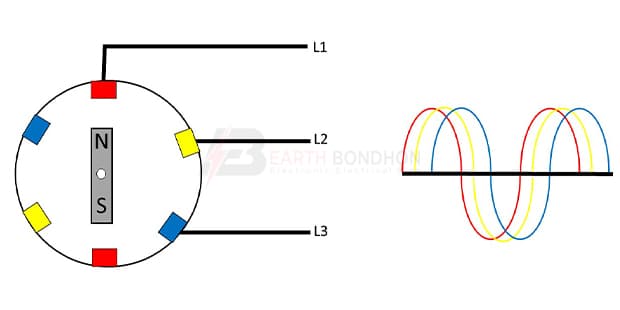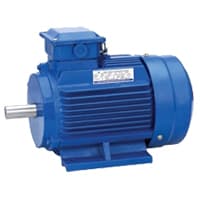How to a 3 phase motor works:
This diagram shows how to make How a 3-phase motor work. In this circuit, we use a 3-phase motor. In this post, we will describe how to a 3-phase motor working principle. A stator and rotor are components of a three-phase induction motor. While the rotor has a short-circuited winding known as rotor winding, the stator has a three-phase winding known as stator winding. The rotor winding receives its voltage and power from the stator winding using electromagnetic induction. The stator winding is fueled by a three-phase supply. Therefore, electromagnetic induction serves as the basis for how a three-phase induction motor operates.
Components needed For this Project:
You can get the components from any of the sites below:
- 3 Phase Motor[See Buy Click Amazon]
*Please note: These are affiliate links. I may make a commission if you buy the components through these links. I would appreciate your support in this way!
Components used to make the How to a 3 phase motor works:
A Three-Phase electric motor uses a 3-Phase Power Supply to Convert Electric Energy into Mechanical Energy. It contains four Wires (Three hot Wires and one Neutral Wire) and Uses 3 Alternating Currents of the Same Frequency. Since it Generates a Rotating Magnetic Field, it does not need a Capacitor for the Startup. Some Three-Phase Motors are Reversible, Which Means they can serve as Generators by Turning Mechanical Energy into Electrical Energy.
Thank You for visiting the website. Keep visiting for more Updates.
Read more Single Phase Wiring
What is a kilowatt-hour (kWh) | kwh formula | What does kwh mean
Introduction to Electrical Units and CircuitskW and kWh on your electricity bill As your home uses electricity during...
What is the Difference Between kVA | What does KVA mean | kVA formula
Difference Between KVA ExplainedWhat does KVA Mean? There are technical terms aplenty when it comes to generators, and...
Power Factor | Power Unit | Energy | Electricity Unit
Power factor definition | Calculating Power FactorPower Factor Values In a purely resistive circuit, the power factor...


0 Comments